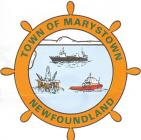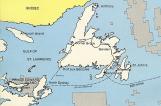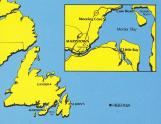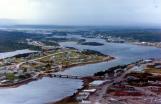2
Introduction to Shipbuilding in MarystownMarystown, Newfoundland and Labrador, Canada, was known as Mortier Bay until 1909. It is situated on a wide harbour in Mortier Bay and is considered as one of the largest ice-free harbours in eastern North America. Marystown was first settled because of its good harbour; nearness to and easy access of abundant fishing grounds; good farming land; and its availability of adequate timber for shipbuilding and general construction.
The Marystown area was visited by Basque and French fishermen in the sixteenth and seventeenth centuries. The area is thought to have first been settled in the early 1800s when an Englishman, Joseph Cleal, settled at Creston South. For this exhibit, the communities of Beau Bois, Creston, Jean de Baie, Little Bay, Mooring Cove, Rock Harbour and Spanish Room will be considered as part of the Marystown area.
The Marystown area's tradition of ship and boat building is a long one. The first boats built in the area may have been modeled from Basque fishermen vessels (a type of ship known as "chaloupe"). Later, ships were built as winter work projects, expanding during the 1840s to the construction of "Western Boats," which were schooner rigged crafts of 20-30 tons. These ships were crewed by five and six men, in two or three dories, to prosecute the fishery in outer Placentia Bay and off Cape St. Mary's. They stayed out at sea for weeks at a time.
4
I's Da B'y That Builds the Boat, Traditional, Performed by Con Fitzpatrick5
Introduction to Shipbuilding in Marystown (Con Fitzpatrick)2004
Marystown, Newfoundland and Labrador, Canada

6
Introduction to Shipbuilding in Marystown (Con Fitzpatrick)The tradition of shipbuilding in Mortier Bay, Newfoundland predates settlement. Documents from the early 1800s refer to shipbuilding in the bay by fishermen from all around the Placentia Bay area.
The types of boats built in Marystown and surrounding settlements over the years ranged from: trap skiffs and dories, 20 to 30 ton Western Boats, 50 ton schooners, the large 196 ton 3 masted tern schooners, magnetic minesweepers for World War II, longliners, 750 ton steel draggers, 900 ton ferries, coast guard and fishery patrol vessels, harbour tugs, and the state of the art 1800 ton offshore supply tugs.
The shipyard at Marystown is currently preparing for installation of modules and commissioning of the "Sea Rose," a floating oil production ship to develop the "White Rose" offshore oil well.
7
Marystown crest, depicting our shipbuilding, fishing and oil heritage.2004
Marystown, Newfoundland and Labrador, Canada

8
Marystown crest, depicting our shipbuilding, fishing, and oil heritage.9
A map of Newfoundland showing the proximity of Marystown to the offshore oil fields.2004
Newfoundland and Labrador, Canada

10
A map of Newfoundland showing the proximity of Marystown to the offshore oil fields.11
Map of Mortier Bay showing the location of Marystown.2004
Mortier Bay, Newfoundland and Labrador, Canada


